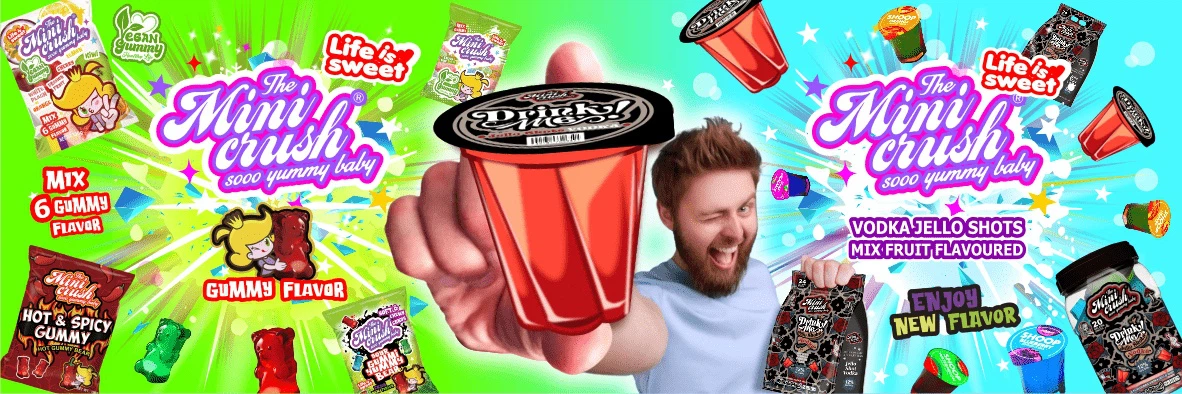The U.S. Food and Drug Administration (FDA) has unveiled a proposed rule that could redefine food manufacturing and marketing strategies, featuring front-of-pack (FOP) nutrition labels that highlight saturated fat, sodium, and added sugars with a Low / Medium / "High" classification.
While the regulation is designed to help consumers make quick, healthier choices, its greatest impact may be felt behind the scenes-forcing food companies to rethink formulations, sourcing, and product development.
A Label That Speaks Louder Than Numbers
Currently, most food products feature a Nutrition Facts panel on the back or side of the package. However, research indicates that many consumers struggle to understand the % Daily Value (% DV) or translate grams of nutrients into meaningful health decisions.
The FDA's proposed rule aims to change that. The new front-of-pack box would indicate:
Low (≤5% DV)
Medium (6–19% DV)
High (≥20% DV)
This system makes it instantly obvious when a product is high in sugar or sodium. For the food industry, however, this simplicity carries a heavy weight: being flagged with a "High Sugar" label could deter purchases and damage brand equity.
Reformulation Pressure Across Categories
Industry analysts expect the new labeling rules to trigger a wave of reformulation efforts, similar to the "trans fat elimination" campaigns of the early 2000s.
Beverages: Soda and juice companies will continue shifting to natural zero-calorie sweeteners like stevia and monk fruit.
Snacks: Salty snack producers may invest in flavor enhancers and potassium-based alternatives to cut sodium.
Confectionery: Candy manufacturers face the dual challenge of reducing sugar without losing texture, shine, or flavor.
"Front-of-pack transparency means you can't hide behind small font and percentages anymore," says Dr. Ellen Whitaker, a nutrition policy researcher at Georgetown University. "If your candy says 'High Sugar,' consumers will notice-and they will switch."
The MiniCrush Advantage: Low-Sugar by Design
For global confectionery manufacturers, the FDA's proposal is both a risk and an opportunity. Those unprepared to reformulate may lose shelf space, while those with ready-to-market solutions could gain an edge.
This is where MiniCrush, a Chinese-based low-sugar confectionery innovator, has built a strategic advantage.
Hard Candy Innovation: By combining allulose (a rare sugar with browning potential) and isomaltulose (for structure and gloss), MiniCrush replicates the glassy quality of sucrose candies without "High Sugar" risks.
Gummies: Formulations blend monk fruit extract for sweetness and prebiotic fiber syrup for bulk and chewiness, balancing indulgence with health.
Chewy Candies: Customized polyol blends ensure elasticity and taste while lowering sugar load.
Unlike legacy brands scrambling to adapt, MiniCrush has been positioning itself for the regulatory future from day one.
B2B Model: A Lifeline for Global Brands
Many small and medium-sized brands in the U.S. and Europe do not have the R&D resources to rapidly reformulate for compliance. MiniCrush's B2B-focused model addresses this gap directly:
ODM (Original Design Manufacturing): Brands can launch FDA-compliant low-sugar candies under their label without starting from scratch.
Private Label Solutions: Retailers can introduce store-branded low-sugar lines backed by MiniCrush's formulations.
Export-Ready Compliance: MiniCrush aligns recipes with FDA and EFSA thresholds, reducing the risk of "High Sugar" or "High Sodium" warnings.
Functional Add-ons: Fiber, vitamin C, or probiotic enhancements not only cut sugar but also add health premiums to products.
"In the age of front-of-pack labeling, compliance is not enough. Brands need to differentiate by offering low sugar and added value," notes a MiniCrush spokesperson.
Industry Benchmarking: Learning From Big Food
The FDA's proposal has already sparked movement among multinational corporations:
PepsiCo: Expanding its portfolio of stevia-sweetened beverages to avoid "High Sugar" flags.
Nestlé: Reformulating confectionery products with chicory root fiber and alternative polyols to reduce added sugar.
Hershey: Testing zero-sugar chocolate lines targeting both diabetic consumers and mainstream health-conscious shoppers.
MiniCrush aims to act as a bridge between these large-scale reformulation strategies and smaller brands seeking to stay competitive. By providing turnkey, export-ready solutions, it enables regional players to leverage the same science and innovation as industry leaders.
Compliance as a Market Differentiator
For brands, avoiding a "High Sugar" label is not just about avoiding risk-it is about winning trust.
In competitive retail environments, a package marked Low Sugar could become an instant selling point. Conversely, products that remain flagged "High" risk being relegated to the bottom shelf or losing consumer loyalty.
By embedding regulatory compliance into its formulation philosophy, MiniCrush offers a competitive edge to its B2B partners:
Reduced time-to-market with compliance-ready recipes.
Lower reformulation costs through shared R&D capabilities.
Faster consumer adoption thanks to clear "Low" or "Medium" labeling advantages.
The Bigger Picture: Global Implications
Although the FDA's proposal is U.S.-specific, experts believe it will influence global labeling standards. Europe is already experimenting with front-of-pack systems like Nutri-Score, and other markets are expected to follow suit.
For manufacturers, this means regulatory harmonization is on the horizon. MiniCrush's ability to design for multiple jurisdictions positions it as an attractive partner for multinational and regional brands alike.
Conclusion: The Sweet Spot Between Compliance and Innovation
The FDA's front-of-pack labeling proposal represents more than a consumer protection policy-it is a catalyst for industry-wide transformation.
For legacy brands, it is a wake-up call.
For consumers, it is a clarity boost.
For B2B innovators like MiniCrush, it is validation that their low-sugar-first philosophy is the way forward.
As one MiniCrush executive summarized during a recent international trade show:
"In the new era, candy companies won't just compete on taste-they will compete on transparency. The winners will be those who can deliver indulgence without the 'High Sugar' tag."
By aligning regulatory compliance with taste innovation, MiniCrush is helping ensure that the future of candy is not only sweet, but also smart.










